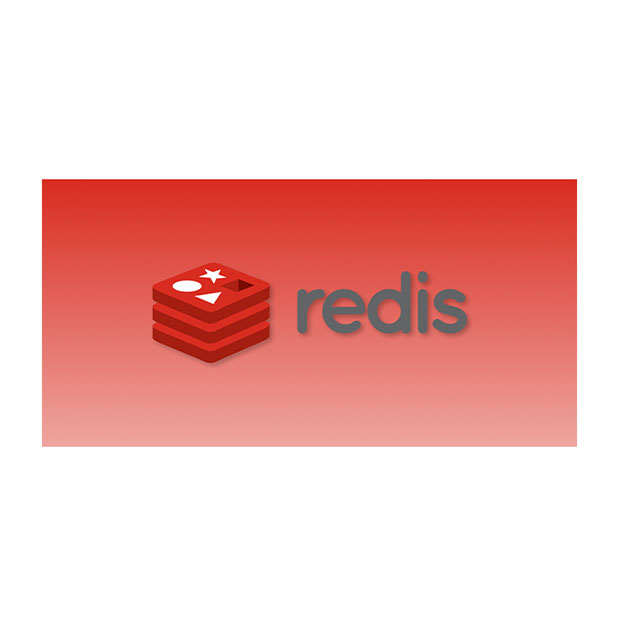What is Redis Cache?
Redis is one of the most popular key-value databases, ranked 4th in user satisfaction for NoSQL databases. Its popularity continues to grow, and many companies are looking for Redis developers for roles such as database administrators, etc.
Redis is a popular, fast, in-memory, open-source data storage used as a database, cache, and intermediary between site visitors and administrators.
Redis is an open-source, in-memory data structure store used as a database, cache, and intermediary between site visitors and administrators due to its fast read-and-write operations, rich data types, and memory structure. Advanced is known; It is ideal for developing high-performance and scalable web applications.
In this article, we will discuss Redis, its benefits, and its uses. It will surely be useful for many of you who are not familiar with this concept, so stay tuned.
What is Redis Cache?
Redis, which stands for Remote Dictionary Server, is a fast, open-source, in-memory key-value data storage. In simpler terms, the Redis cache is a type of data structure that resides in the servers’ RAM, and the data is stored as They are temporarily stored in it.
The project began when Redis lead developer Salvatore Sanfilippo wanted to improve the scalability of his Italian startup. He developed Redis in 2006, which is now used as a database, cache, and message broker.
Suppose you have a web application with a lower loading speed than normal sites, and it takes approximately 30 to 60 seconds to load. In the meantime, by connecting the Redis service to your site, you can perform caching operations to make the information available faster. The mode itself is somehow loaded through RAM and displayed to the client.
Redis delivers sub-millisecond response times and powers millions of requests per second for real-time applications in gaming, ad tech, financial services, healthcare, and the Internet of Things.
Today, Redis is one of the most popular open-source engines, named by Stack Overflow for five years as the best temporary database. Due to its fast performance, Redis is a popular choice for storage, session management, gaming, leaderboards, analytics, real-time analysis, geospatial, ride, chat/message, media streaming, and sub-programs.
AWS offers two fully managed services for running Redis: Amazon MemoryDB for Redis is a Redis-compatible in-memory database service that delivers ultra-fast performance, and Amazon ElastiCache for Redis is a fully managed cache service that provides access to data from primary databases and data stores with microsecond latency. Forgives.
Redis is an advanced NoSQL key-value data store and is often referred to as a data structure server because its keys include strings, hashes, lists, collections, ordered sets, bitmaps, and hyperlogs. Redis read and write operations are very fast because it stores data in temporary memory. Data can also be saved to disk or returned to memory.
Because Redis stores its data in temporary memory, it is mainly used as a cache. Some prominent organizations using Redis include Twitter, GitHub, Instagram, Pinterest, and Snapchat.
Key value store or database
A key-value database is a non-relational database that uses a simple key-value method to store data.
Both keys and values can be anything from simple to complex compound objects. Many key-valued databases are partitionable, allowing for horizontal scaling at scales that other databases cannot. Achieve it; For example, if an existing partition fills and more storage is needed, Amazon DynamoDB allocates additional partitions to a table.
Redis cache comparison
Redis client-side caching is also known as “tracking.” Since Redis is a data structure-based solution, caching in Redis can be strings, hashes, lists, sets, or ordered sets. It uses streams and many other data structures, and you also need to know that reading and writing to the cache requires the use of GET and SET commands in Redis.
If this practice is implemented correctly, the cache in Redis can significantly improve the application’s performance. But how does Redis storage compare to other options?
Redis is often compared to Memcached, another open-source key-value store. Like Redis, Memcached is a popular caching engine with support for dozens of programming languages, according to InfoWorld. However, Redis is the best choice for almost all cache use cases, although Memcached may be better for relatively small and static data, such as snippets of HTML code.
Reasons to prefer Redis over Memcached for storage are:
- Redis provides multiple cache flush policies, while Memcached only provides LRU (recently used).
- Key names and values in Redis can be up to 512 MB, while key names in Memcached can be only 250 bytes.
- Redis caches can store many data structures, including lists, sets, sorted sets, bitmaps, and spatial indexes.
Advantages of Redis
Performance
Redis enables low-latency, high-throughput data access. Unlike traditional databases, in-memory data storage does not need to travel to disk, reducing engine latency to microseconds. For this reason, in-memory data stores can support more operations and faster response times, resulting in fast performance with average read and write operations of less than one millisecond and support for millions of operations per second.
Flexible data structures
Unlike other key-value data stores that offer limited data structures, Redis has a wide variety of data structures to meet the needs of your application. Redis data types are:
- Strings – Text or binary data up to 512MB in size
- Lists – A collection of strings in the order they were added
- Sets – an unordered set of strings with the ability to cut, join, and differ from other types of sets
- Sorted Sets – Sets that are sorted by a value
- Hash – A data structure for storing a list of fields and values
- Bitmaps – A data type that provides bit-level operations
- HyperLogLogs – A probabilistic data structure for estimating unique events in a dataset
- Stream – A message queue logging data structure
- Geographic – Inputs based on the latitude and longitude of maps
Simplicity and ease of use
Redis enables you to write traditionally complex code with fewer and simpler lines. With Redis, you write fewer lines to store, access, and use data in your applications. Unlike traditional database query languages, developers using Redis can use a simple scripting structure.
For example, you can use the Redis hash data structure to transfer data to a data store with just one line of code. A similar task in a data store without a hash data structure would require many lines of code to convert from one format to another.
Redis has native data structures and many options for manipulating and interacting with your data. Over a hundred open-source clients are available for Redis developers, and supported languages include Java, Python, PHP, C, C++, C#, JavaScript, Node.js, Ruby, R, Go, and many more…
Repetition and durability
Redis uses a primitive replica architecture and supports asynchronous replication, where data can be copied to multiple replica servers. For continuity, Redis also supports point-in-time backups (copying Redis datasets to disk).
Redis is not built to be a durable and compatible database. If you need one, consider Amazon MemoryDB for Redis.
Because MemoryDB uses a durable transaction log that stores data in multiple Availability Zones (AZs), it can be used as your primary database. MemoryDB is purpose-built to enable providers to use the Redis API without worrying about managing a separate cache, database, or underlying infrastructure.
High availability and scalability
Redis provides a basic replica architecture on a primary node or a cluster topology; This allows you to create highly available solutions that offer consistent performance and reliability.
open source
Redis is an open-source service also supported by AWS It is based on open standards, supports open data formats, and has a rich set of clients.

Popular use cases of Redis
save
In another view, Redis is an excellent choice for implementing a highly available in-memory cache to reduce data access latency, increase throughput, and reduce the load from a database and relational or NoSQL application.
Redis can deliver frequently requested tasks in sub-millisecond response times, allowing you to easily scale for higher loads without incurring more expensive overhead, storing query results in the database, persistent session storage, web page caching, and object caching. Typical uses, such as images, files, and cloud data, are popular examples of storage with Redis.
Chat, messaging, and queuing
Redis supports Pub/Sub with pattern matching and various data structures such as lists, sorted sets, and hashes; This also allows Redis to support high-performance chat rooms, real-time comment streams, social media feeds, and server-to-server communication. The Redis List data structure makes it easy to implement a lightweight queue.
Lists offer block functionality, making them suitable for various applications that require a trusted message broker or a circular list.
Game scoreboards
Redis is a popular choice among game developers looking to build real-time leaderboards. The Redis Sorted Set data structure provides element uniqueness while maintaining a sorted list based on users’ scores. Creating a real-time ranking list is as easy as updating a user’s score every time it changes.
You can also use sorted collections to manage time series data using timestamps as points.
Meeting shop
As an in-memory data store with high availability and persistence, Redis is a popular choice among application developers for storing and managing session data for Internet-scale applications. Provides management of session data such as user profiles, credentials, session state, and user-specific personalization.
Rich media playback
Redis provides a fast, in-memory data store for live streaming use cases. It stores metadata about user profiles and viewing history, authentication information/tokens for millions of users, and manifest files, and is used. It uses CDNs to stream videos to millions of mobile and desktop users simultaneously.
Geographical
Redis provides in-memory data structures and operators for real-time spatial data management at scale and speed. Commands like GEOADD, GEODIST, GEORADIUS, and GEORADIUSBYMEMBER make geospatial with Redis easy and fast to store, process, and analyze spatial data in real-time. You can use Redis to add location-based features such as driving time, distance, and points of interest to your applications.
Learning the machine
Modern data-driven applications require machine learning to quickly process data’s enormous volume, variety, and velocity and automate decision-making. For use cases such as fraud detection in gaming and financial services, real-time bidding in ad tech, and matchmaking in dating and ride-sharing, the ability to process live data and make decisions in tens of milliseconds is critical.
Redis gives you a fast in-memory data store to build, train, and deploy machine learning models quickly.
Real-time analysis
Redis can be used with streaming solutions such as Apache Kafka and Amazon Kinesis as an in-memory data store for ingesting and processing real-time data with sub-millisecond latency; Redis is an ideal choice for real-time analytics use cases such as social media, ad targeting, personalization, and IoT.

Redis data types
Redis is a key-value store that supports many types of data structures as values other than strings. A key in Redis is a secure binary string with a maximum size of 512 MB.
In the following, we will also have explanations for the types of data that are supported in the values:
field
A string in Redis is a sequence of bytes. It is binary safe, so its length is fixed and not determined by terminating characters. You can store up to 512MB in a Redis string, storing any data, such as text, integers, floats, videos, images, or audio files.
the List
A list in Redis is a list of strings sorted by insertion order, so the elements are stored in a linked list. If we need to insert an element into a list with 500 records, it will take the same amount of time to add the element to a list of 50,000 records.
Collections
Collections in Redis are unordered collections of strings. This value type is similar to List, but sets are not allowed to repeat, and elements are not sorted in any order. You can add or remove members in O(1)O(1) time complexity.
Collections are useful when we want to store data where uniqueness is important, such as the number of unique visitors to a website.
Sorted collections
We can sort the elements with a Sorted Set value type; Each element of the set will be associated with a number, which we call points. This specifies the order.
Hash
In Redis, a hash value type is a field-value pair. Hash values are used to represent objects, but they can store many elements and are useful for other tasks. A hash takes up very little space, so you can store millions of objects in a small hash instance.
Suppose we want to store information about students’ grades. The subject can be a key, and the value can be a field-value pair, where the field is the student’s name and the value is their grade.
Replication of data in Redis
When data is stored on a server and the server crashes, the data may be lost. To avoid this problem, we use the data replication technique. This basically means that data is stored on two or more servers to avoid losses or failures. Data replication also reduces the load on our servers, as user requests are load-balanced.
Redis uses a leader/follower approach to server-based data replication. One server is the leader, and the other servers are the followers, all of which are connected to the leader.
If the follower is disconnected, it will automatically reconnect and repeat the leader exactly. This can be done in two ways:
- Partial sync
- Full sync
In Redis, the replication process is asynchronous; follower servers verify data asynchronously.
Durability
Since Redis is an in-memory database, data is stored in memory (or RAM); If the server crashes, all stored data is lost. Redis has backup mechanisms for data on disk, so when the server restarts, the data is loaded from the disk to memory.
Redis has two persistence options:
- RDB Persistence (Snapshot): Snapshots of data on a disk are stored in an RDB file. Their durability depends on how often data is flushed to disk.
- Attach Only File (AOF) Persistence: Every write operation received by the server is logged to a file, so all commands in the AOF file are re-executed on reboot. Client-side cache
When a client needs data, it asks a Redis server to provide it, which takes a lot of bandwidth for each request. To improve performance, we can cache the results of the most commonly used keys on the client side.
Redis provides support for client-side caching, which is called tracking. There are two different approaches:
- Default mode: The server stores information about which key was stored by which client. If a key changes, the server only sends the message to the relevant clients.
- Broadcast mode: The server does not need to keep track of keys stored by clients. Instead, clients subscribe to key prefixes and receive notifications when a key matches a particular prefix.
Conclusion
In conclusion, Redis stands out as a powerful and versatile in-memory key-value database, celebrated for its exceptional speed, flexible data structures, and wide-ranging applications. From caching and session management to real-time analytics and gaming leaderboards, Redis empowers developers to build high-performance, scalable web applications across industries like gaming, healthcare, and financial services. Its open-source nature, ease of use, and support for diverse data types make it a preferred choice over alternatives like Memcached for most use cases. As organizations continue to prioritize low-latency and high-throughput solutions, Redis remains a cornerstone technology, driving innovation and efficiency in modern application development. By leveraging its capabilities, developers can unlock new possibilities for creating responsive, data-driven experiences.

